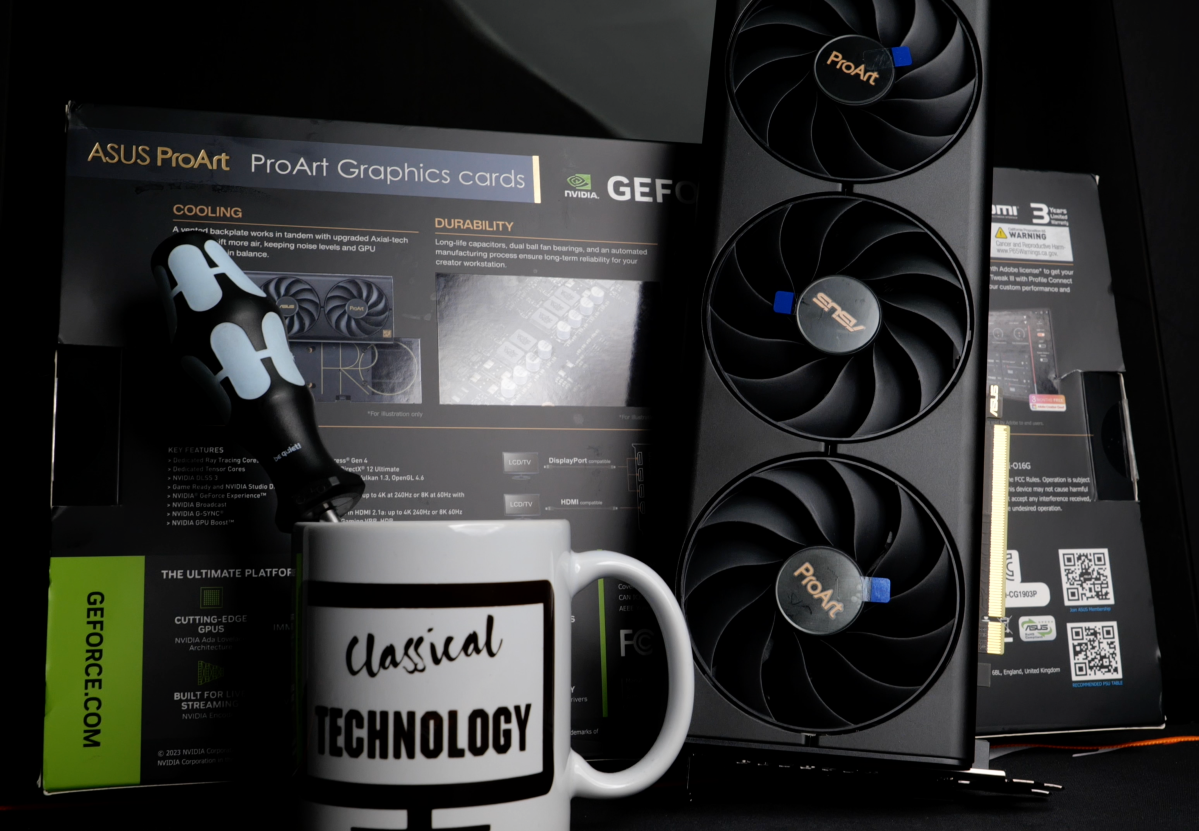Building your own gaming PC is one of the most satisfying experiences you can have in the hardware world. You’ve got the entire arsenal of PC hardware and components to choose from. If you’re up to the challenge, it’s fun to make these parts all work brilliantly together. Sometimes, things go wrong — and you learn, and do it again better in the future. In the end, you’re left with a sense of satisfaction if you stick with it. Did we mention it’s often cheaper, too?
Even if you’re a seasoned PC builder yourself, what lessons could you learn from a custom, boutique PC? That’s the question I asked myself. After having built dozens upon dozens of gaming PCs for fun (and for science!), I decided to order a Falcon Northwest Tiki.
This is not a question about if “building it yourself” is better than an PC built by someone else. It’s about what a DIY builder can learn from an iconic boutique PC builder who is experienced in the “art” of building PCs. Falcon Northwest, founded in 1992, was one of the first companies dedicated to building bespoke gaming PCs. You’ll find there are many more similarities than expected, and lots to learn.
What I learned throughout the process was surprising — and added to my PC knowledge toolbox. (The Tiki is a pretty impeccable machine, too.) Let’s discuss the most important lessons that all DIY PC builders can learn from the oldest custom PC builder around, and what you can incorporate in your build process. For more context into how FNW’s attention to detail translates to an actual computer you can buy, be sure to check out our 5-star review of the virtually flawless Falcon Northwest Fragbox.
Be sure to subscribe to Thiago’s YouTube channel, Classical Technology, for detailed PC analysis like the video below and near-daily coverage of graphics card trends.
Lesson #1: Planning your build
When I get the idea to build a PC, I’m the type of person that just wants to get up and start going right away. You know the drill — order the parts you’re enamored with and ask questions later. As long as they’re compatible, you’re fine, right? Use any leftovers for a second, or third, or fourth “fun build.” I’ve learned the hard way that this isn’t always the best approach.
What can go wrong? Remember that GPU you wanted? Sure, it fits the case you chose — but not without some adjustments. Oh, and you forgot that this GPU has a different airflow pattern than your last one, making it run too hot in your new case. How about that powerful Mini-ITX motherboard you chose? Sure, it’ll perform great – but now you need to swap out to lower profile ram since the CPU cooler won’t fit.
This is the Asus ProArt 4060 Ti, which is very similar to the 4080 in the Tiki – and it fits!
Thiago Trevisan
That’s the first lesson I learned from the Tiki — having an organized “system” in place throughout the build process. Due to the small nature of this case, this is even more vital. It is packing an Nvidia GeForce RTX 4080 from Asus, the ProArt. Why not a Founders Edition? It won’t fit. Everything was carefully chosen to properly fit inside this custom-built enclosure.
To mitigate heat issues, the case also has updated ventilation openings for dual fans that blow directly onto the GPU, keeping gaming temperatures in the 60s Celsius. You’ll see this trend in a lot of newer DIY PC cases, but it’s something Falcon Northwest has been doing for a while. There is a big emphasis on airflow focused designs to keep up with beefy hardware temperatures.
You can’t slam any CPU in your system without proper planning, either. This diminutive Tiki only has the space for a small 120mm liquid cooled AIO. If you throw an Intel 13900KS in there, that’s not going to work. You’ll need either a 13900 (Non-K with a lower TDP), or the AMD Ryzen 7800X3D.
While research will get you a long way to ensure part compatibility, new platforms such as AM5 have had teething issues. Certain DDR5 ram has proved difficult to stability work across different motherboards, for example. The QVL motherboard ram lists can be useful, but not always the final say. While most people won’t want to test out various kits of ram, one can learn a lot from the part selection from a builder such as Falcon Northwest.
You’d think a higher priced custom-PC builder would want to push the limits of performance by choosing the most expensive motherboards and highest speed RAM, right? Not so fast! They’re often more conservative in their selection. That’s an important lesson to learn here. The bleeding edge hardware can put up impressive numbers, but often it’s so niche that it can have outlying issues that aren’t as widely known. Less is often more here, to use an apt phrase.

Imagine the planning required to fit all of this into a small Maingear Turbo. Answer: A lot!
Thiago Trevisan
PC build planning can sometimes be simple if you have a decently large case to work with and standard hardware. If you choose to do much more complicated builds, such as the something like the Maingear Turbo pictured above, plus add water cooling — you better set aside multiple nights!
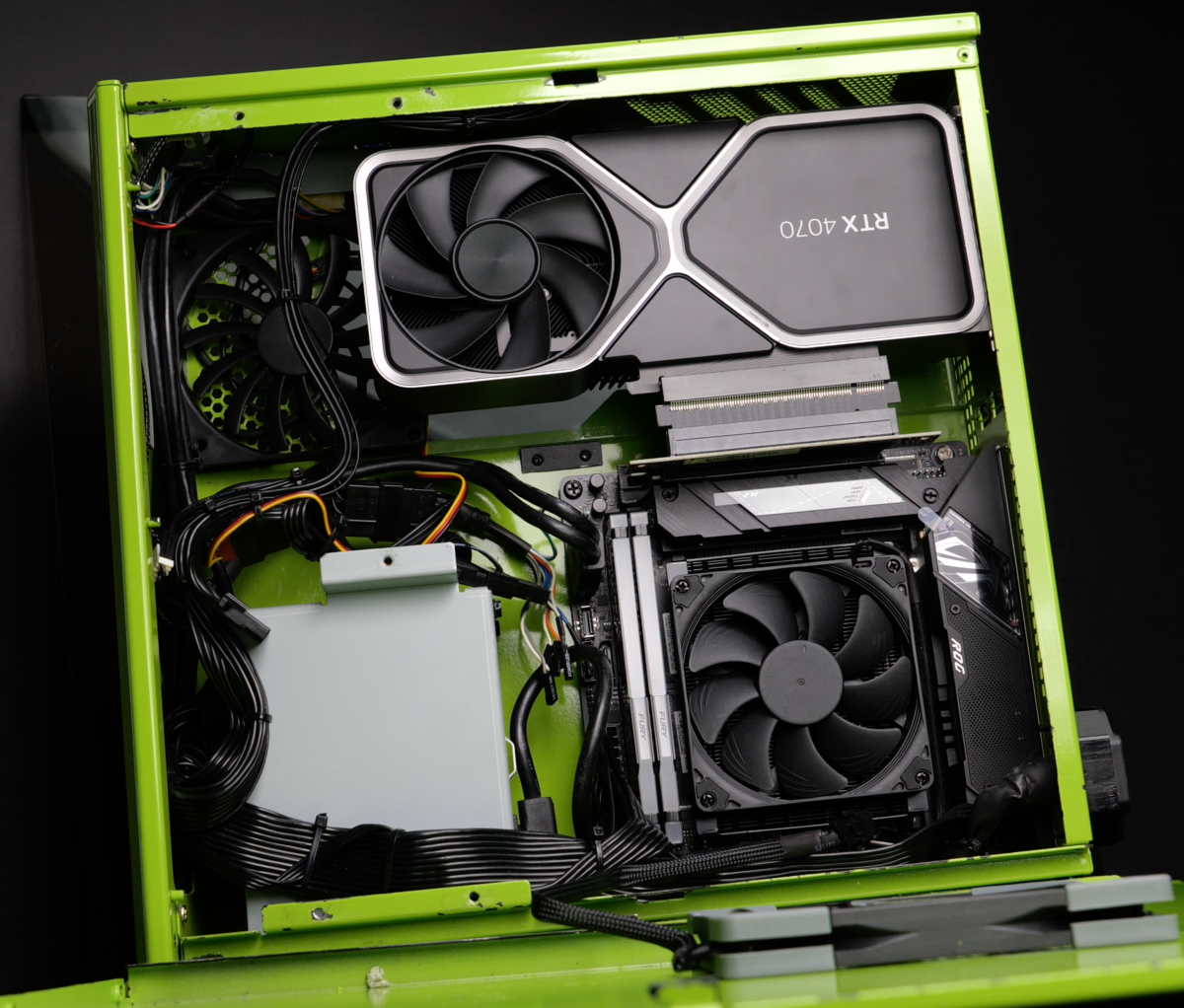
This is an 8 year FNW Tiki case I did a DIY build in – lots of fun, but missing the great airflow of the new one, so I had to carefully plan the hardware choices
Thiago Trevisan
Part of your build process should be to choose parts that perform well, but also have more stability associated with them. This can save you hours diagnosing rare issues that only a select hand of enthusiasts may encounter.
Lesson #2: Test your build
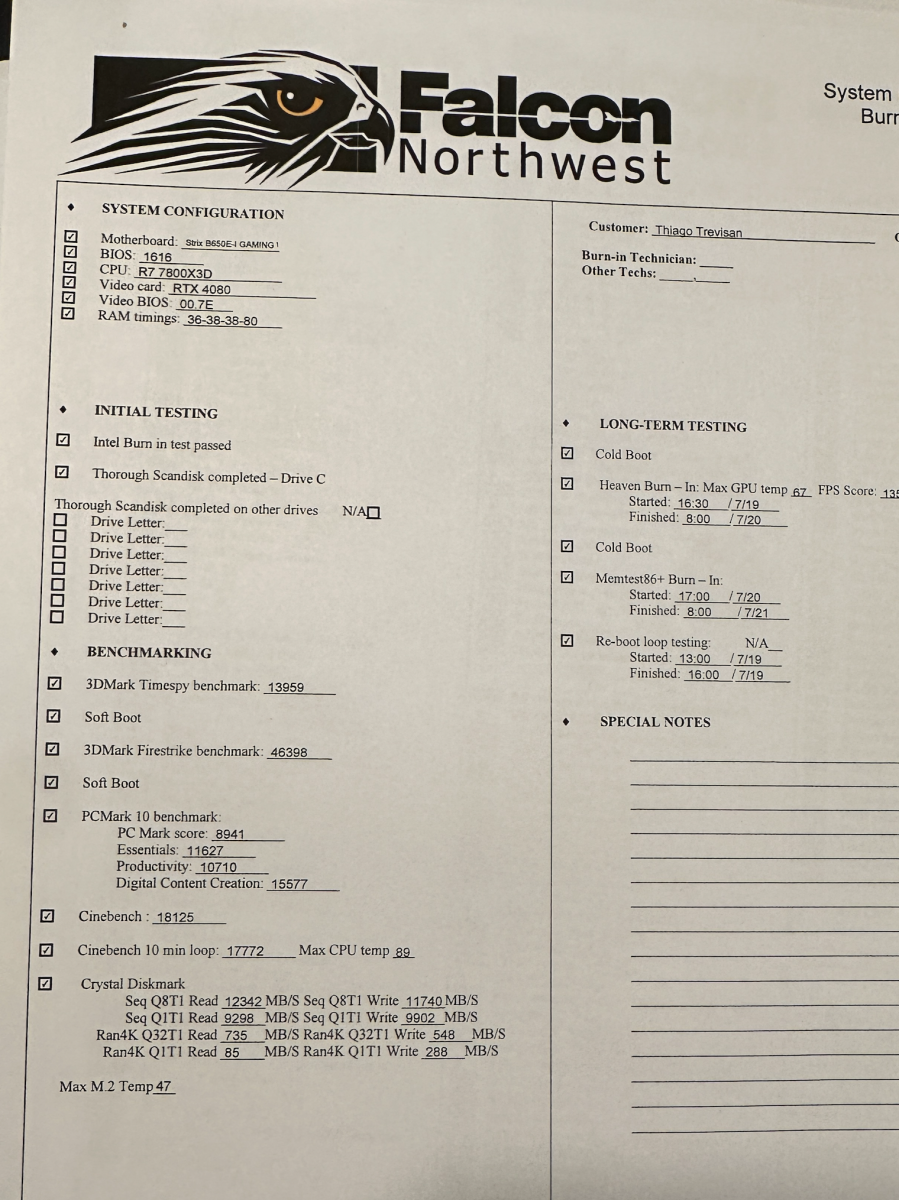
Test, test, test!
Thiago Trevisan
The internet is full of forum posts asking if a certain performance experience is “normal,” or if something is wrong with their hardware. There are many pitfalls that are possible when you build your own PC. Incorrectly mounting your CPU cooler? I’ve done that, temperatures were awful. Your system is constantly freezing? Bad RAM stick, as was the case with me.
Part of having a system in place is not only during the build process, but soon after as well. Falcon Northwest gives you documentation showing all the tests that they ran, complete with results from 3DMark, MemTest, Cinebench, and other useful PC benchmarking software.
This should be part of every DIY build process, too. After you’re done piecing your rig together, open your favorite game. With monitoring software that can keep track of frame rates and system temperatures, keep an eye on what is happening.

Thiago Trevisan
If you installed something incorrectly (higher temperatures may be a big giveaway), you’ll notice it and you can start to fix the issue. Compare your FPS at your resolution and settings to a known good test sample. PCWorld’s GPU and CPU benchmark reviews are great for this, to gauge if your numbers are within an accepted range.
There are lots of great and free software that have widely available data. Cinebench R23 can tell you if your CPU is running healthy and within spec. Many games may also have a built-in benchmark tool, such a Shadow of the Tomb Raider or Cyberpunk 2077.
While a custom-builder such as Falcon Northwest tests their systems to ensure a good end-user experience and less RMAs, the exact same can apply to a DIY build, too.
Lesson #3: Uniqueness is a virtue

Rockstar level signatures from the team, signed on the interior. Now that’s something I wish I could mount on the wall!
Thiago Trevisan
The current crop of PC hardware, primarily PC cases, certainly have grown tremendously in the last several years. You’ll find everything from monster PC towers to small Mini-ITX cases. There are many exceptionally high quality and aesthetically pleasing cases available in the DIY market. Sure, some of them do seem to imitate each other, and innovation isn’t always a given.
Why did I always love building my own PC? Well, it was unique to me. I could choose the parts I wanted and put it in the exact PC case that made me satisfied. Like many DIY builders, I would gasp at the thought of picking up any generic box off the shelf for my personal build.
The Falcon Northwest Tiki does something that I cannot, however. Sure, you can pick up a Fractal Ridge case and “almost” get the spirit of the Falcon Northwest Tiki close enough, or any number of fantastic DIY cases.
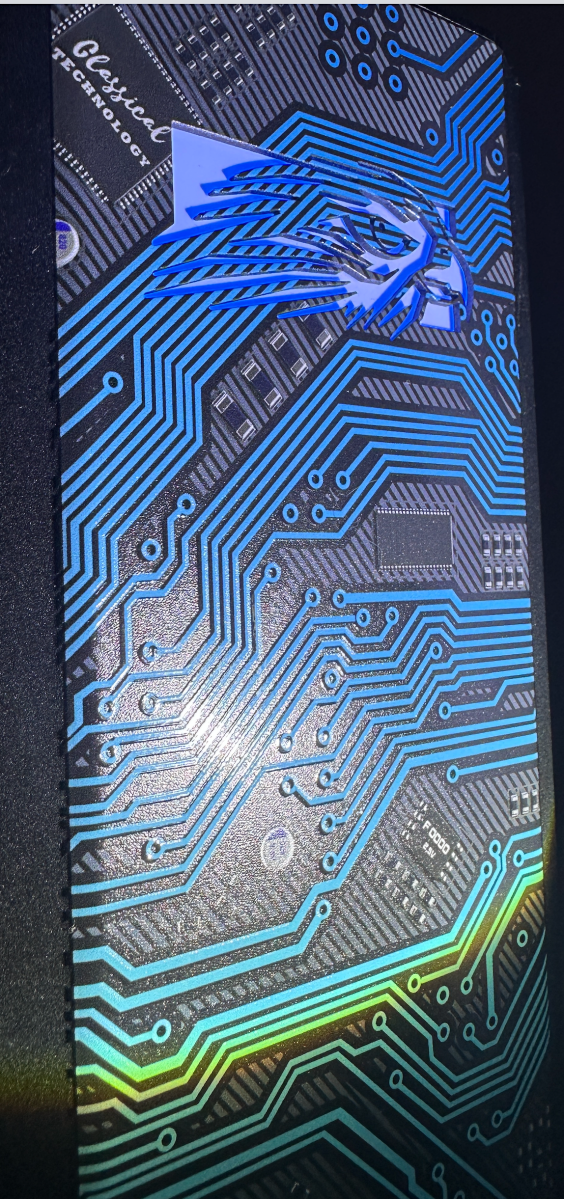
Look closely at the awesome detail and Easter eggs of the UV Print, it feels like it’s painted on.
Thiago Trevisan
Without the proper UV printer or talent for painting PC cases, I would be left with just a generic black or white PC case, typically. The Falcon Northwest Tiki here is adorned with an awesome “Circuit” theme that looks and feels stunning.
What’s the lesson here? Being distinctive and unique is part of the reason we love PC building so much. Go out of your comfort zone and you’ll be even more satisfied with the process. Learn how to do an open-custom loop, or perhaps even learn how to paint your own PC case.
Sure, it’s significantly more work — but the result is often something unique that you can be even more proud of.
Lesson #4: Value is relative
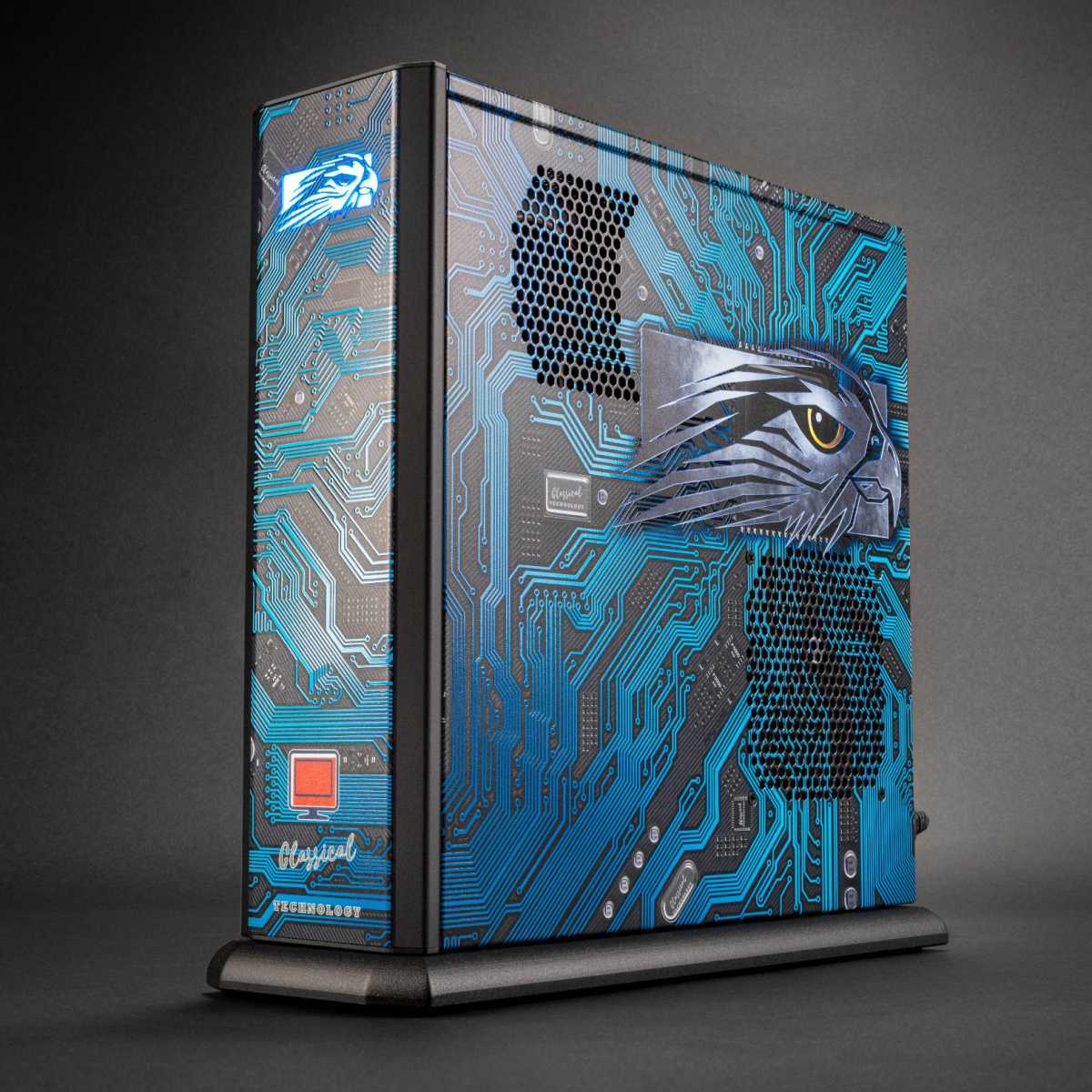
This is Falcon Northwest’s studio picture of my Tiki. Just….look at it! Have you ever seen something so beautiful?
Falcon Northwest
There’s no doubt that buying a boutique custom built PC can often be expensive. It can also be bursting with value, however. This value is unique to each person and can often vary dependent on use case.
Sure, if you’re cost driven, pricing out a DIY system online will always get you the cheapest price. Cheapest isn’t always the answer, or even the priority, for many, however.
You’ll find that the enthusiast PC DIY builders often aren’t very different in their thought process as someone who also appreciates a well-crafted “boutique” PC. At the end of the day, it’s basically another enthusiast who is designing and building it on the other end, too.
In my case, I’m fully capable of building a very similar system, and in fact have done various mini-itx builds to see how mine would perform. I’ll also keep building my own PCs, because I love the process.
Where is the value for me? First, there is the nostalgic value. There’s no denying that Falcon Northwest has been in the game since the early 1990s. I remember spec’ing out their systems years ago. They were the “Lamborghini poster” on my wall, so to speak.

That’s a Tiki from 2016, but still looks sweet – timeless.
Thiago Trevisan
There’s also the practical side. Falcon Northwest was the only boutique PC builder offering an Nvidia RTX 4080 Asus ProArt at the time in such a small enclosure. The Tiki case, custom manufactured and designed by Falcon Northwest, is also exceptionally unique – especially with the high-quality UV printing that has been done. I can’t easily replicate that, even with a high quality Mini-Itx case. That’s worth its weight in gold for me . It truly makes me super happy!
Here’s a good analogy: Enthusiast DIY PC builders often choose hardware based on the value they feel it has, which isn’t always tied to cost. For example, why does one choose a more expensive motherboard such as the Asus ROG Z790 Hero, instead of a more reasonable $200 motherboard? Sure, there are some gains, and a few features you may be after, but I’d bet it also has a lot to do with the design and perceived quality you’re getting out of it. (And if it simply looks sweet, that’s OK too).
That’s the same reason why you may choose that fancy kitted-out graphics card that’s $100 more than the base MSRP mode, which often performs the same.
Building your own PC is an amazing experience, full of intricate possibilities with the impressive span of hardware available.
This same eclectic field can have some important insight shed on it by an experienced PC builder, like I found with my experience with Falcon Northwest. That team is just a collection of PC enthusiasts too, getting paid to do what they love. Where we can take some lessons is from the experience, and collective fine-tuning of the building process that sheds light on how certain things can be done better.
If you’re interested in trying out the Falcon Northwest Tiki for yourself, prices start at $3,300 and go up depending on your chosen configuration. It was very worthwhile for this DIY diehard. If you’re interested in a more portable PC, we’ve tested Falcon Northwest’s iconic Fragbox and found it virtually flawless.
Be sure to subscribe to Thiago’s YouTube channel, Classical Technology, for detailed PC analysis like the video below and near-daily coverage of graphics card trends.

